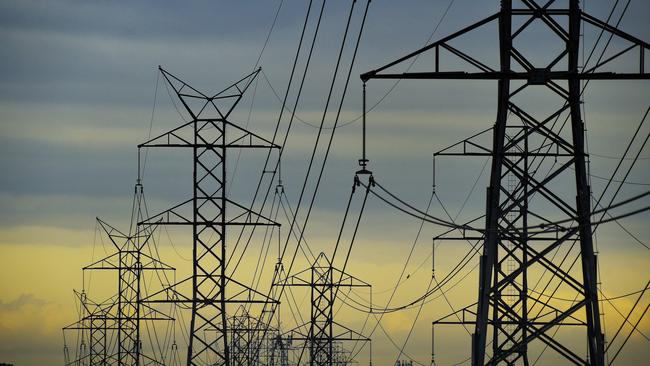New plan to end need for VNI West and Western Renewables Link
Building extra lines along existing easements would end the need to build VNI West and the Western Renewables Link.

Victoria
Don't miss out on the headlines from Victoria. Followed categories will be added to My News.
A radical proposal could end the need to carve up more farmland to build the controversial Western Renewables Link, Victoria-NSW interconnector and other 500kV transmission lines.
The Victoria Energy Policy Centre’s Plan B proposes using 1321kms of existing powerline easements to lift the state’s transmission capacity by 16,675 megawatts, allowing more wind and solar farms to connect to the grid to ensure Victoria meets its renewable energy targets.
Instead of taking out new easements to install 70-80m high pylons, carrying new 500kV lines across farmers’ properties, the No Longer Lost in Transmission report – released today -advocates building new double-circuit, heavy-duty 220kV lines along existing easements, dramatically cutting costs and the impact on landholders.

Report co-author and electrical engineer Professor Simon Bartlett said new double-circuit lines could be built just 10m away from existing 220kV lines on 41 towers, with the old lines removed and the easement narrowed back to its original width.
“We already have 220kV lines, but they are hopelessly overloaded,” he said. “(But) there’s been nothing done to upgrade these lines.”
Prof Bartlett said Queensland transmission operator Powerlink, of which he was chief operating officer for 17 years, used similar heavy duty double-circuit 275kV lines to effectively distribute power over grate distances.
“Queensland has never needed 500kV,” he said. “We’ve never needed it, in a state four times the size of Victoria and with smelters, coal mines and electrified rail.”
Prof Bartlett and his fellow report authors, VEPC director Bruce Mountain and Energy Grid Alliance director Darren Edwards, say Plan B focuses on what is best for Victoria, moving away from the Australian Energy Market Operators plan to build a 500kV “interconnector super-highway” network from Melbourne to Tasmania.
But AEMO system design manager Merryn York said Plan B would not sufficiently support renewable generation development in northwest Victoria and required the demolition of people’s homes to widen the 1040 km of existing easements, as well as threatening power supply to major regional and rural towns during construction.
Professor Bartlett argued the 220kV upgrades could effectively extend transmission capacity into five of Victoria’s six key renewable energy zones – Murray River, Western Victoria, Central North, Southwest Victoria, and Gippsland.
These include:
BUILDING two 200kV double circuit heavy duty lines from Ballarat to Red Cliffs, one via Bendigo and Kerang, the other via Bulgana and Horsham;
REPLACING two single circuit 220kV lines from Ballarat to Moorabool;
CONNECTING Shepparton to Dederang (where it taps into the existing NSW-Victorian northeast interstate connector) – using spare easement to build an extra 220kV double circuit line;
BUILDING 500kV single circuit on 48m pylons along existing easements from Moorabool to Sydenham; and
ESTABLISHING two new side-by-side 500kv single-circuit lines from Loy Yang B substation to Giffard using 48m pylons.
“It’s basically delivering much more transmission capacity than AEMO’s plan, especially to Western Victoria and Murray River (REZs) and at almost half the cost.”
The report’s authors estimate using existing easements and 220kV lines to build a network that services all the REZs will cost $6 billion, compared to delivering AEMO’s WRL, VNI West and other projects listed in its integrated plan.
Originally published as New plan to end need for VNI West and Western Renewables Link




